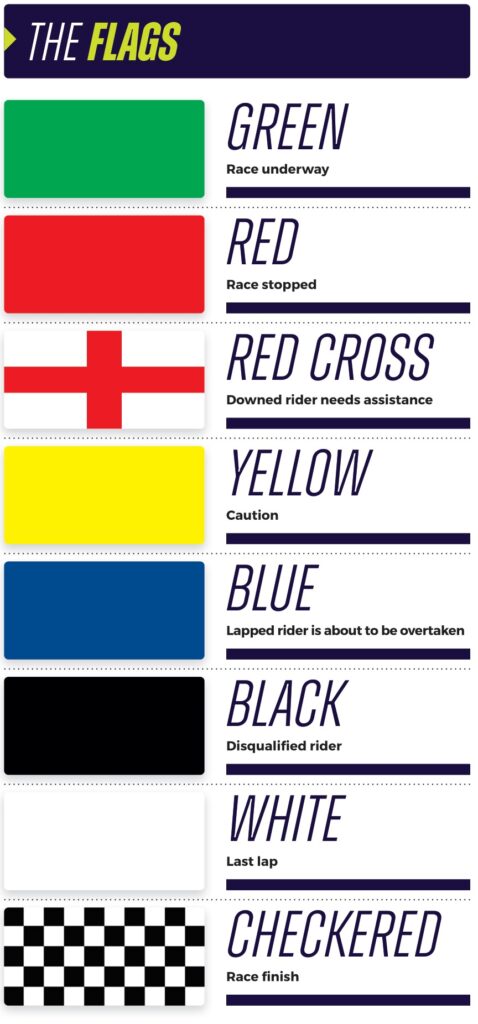101 | SMX
With more than 100 years of combined experience in producing and promoting successful championships, Feld Motor Sports and MX Sports Pro Racing have united to create the world’s first SMX World Championship, combining the technical precision of stadium supercross racing with the all-out speed and endurance of outdoor motocross on the world’s most challenging tracks, all leading to the sport’s ultimate prize.
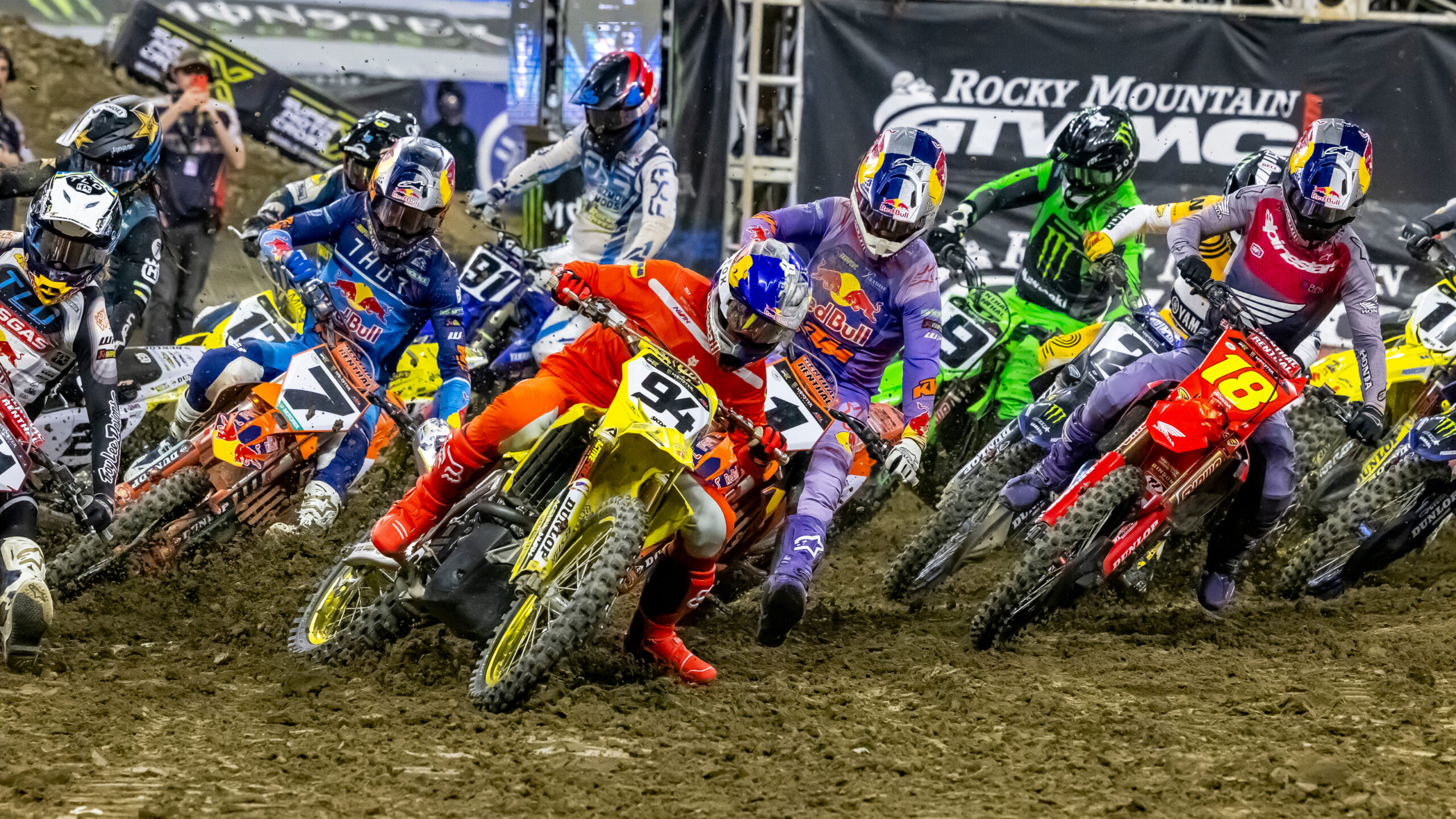

31
ROUNDS

1 Ultimate World
Championship Title

$10 Million
Dollar Purse
How to Qualify
- A combined points tally is accrued through the Monster Energy Supercross and Pro Motocross seasons
- The top 20 points earners in 450 and 250 will automatically qualify and be seeded into the SMX World Championship
- Riders from 21st to 30th in combined points will compete in a Wild Card race for the final two positions of the 22-rider field
- If a seeded, top 20 athlete is unable to compete in an event, an additional opportunity will be made available for a provisional racer to qualify through the Wild Card
- Any racer outside the top 30 in combined points who also won a Supercross Main Event or Pro Motocross moto will also be eligible to compete in the Wild Card race for the 21st and 22nd position
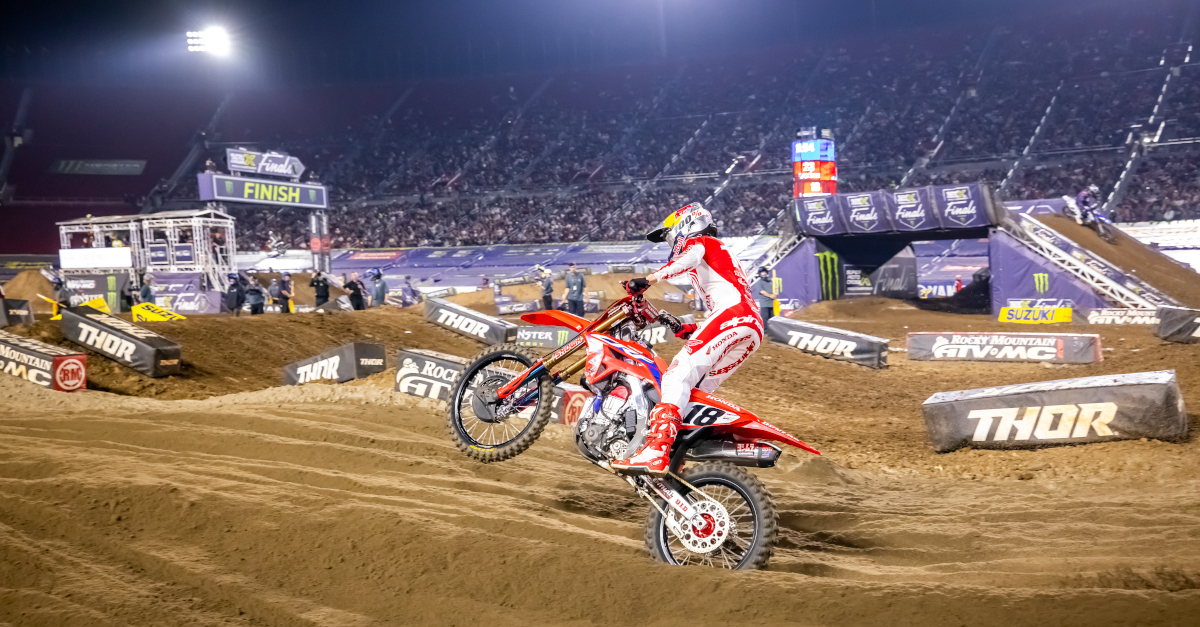
Points Reset
The point system for the SMX World Championship will be unique to the playoff. Points will be reset for the final three races, beginning with 25 points for the top seed, 22 for the second seed, 20 for the third seed, and 18 for the fourth, followed by single-point denominations through the 20th seed. All racers outside the top 20 in combined points will begin the playoff rounds with zero points.
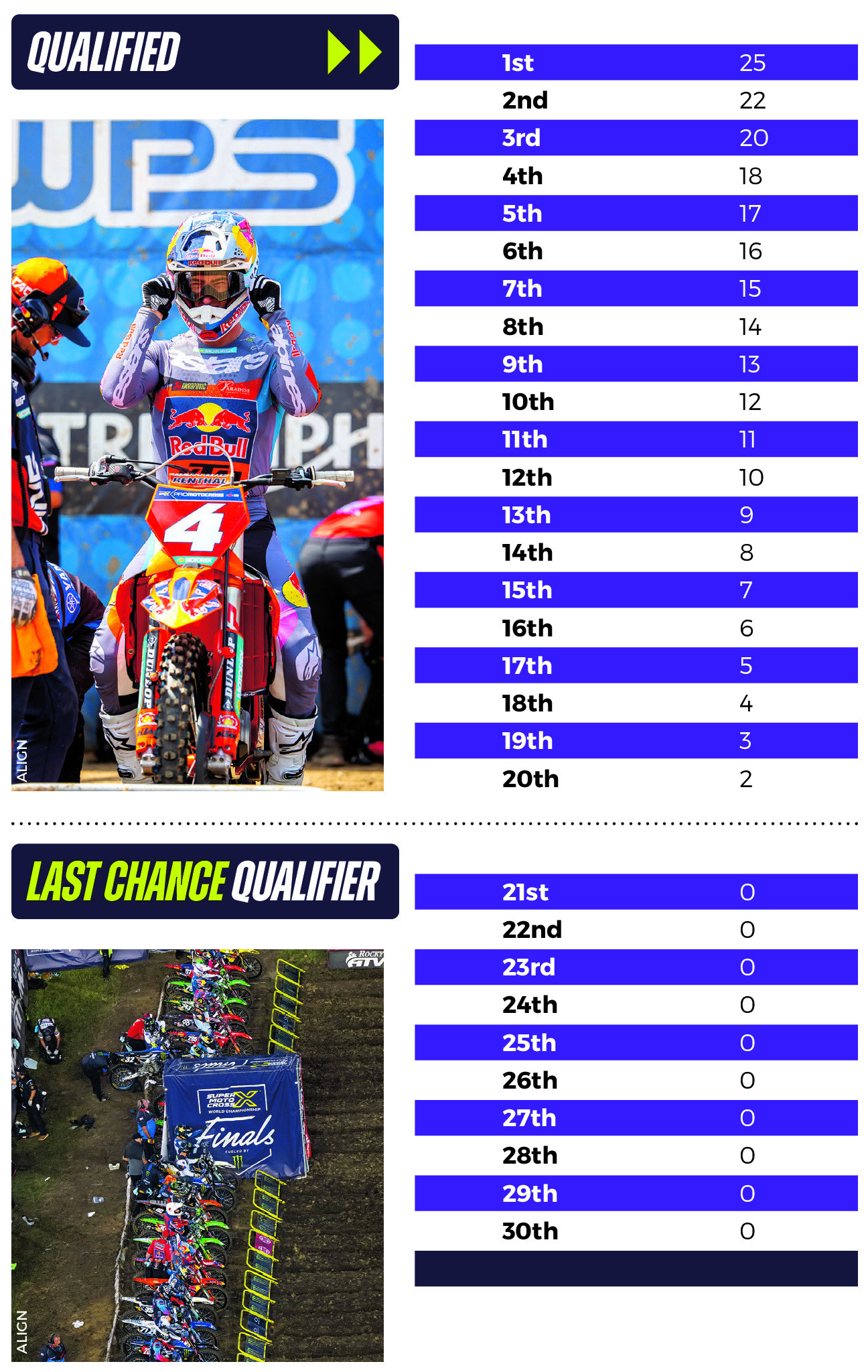
Points System
Playoff 1 will feature the same point structure, while Playoff 2 will pay out double points. The SMX World Championship Final will pay out triple points, guaranteeing an unpredictable outcome for the title.
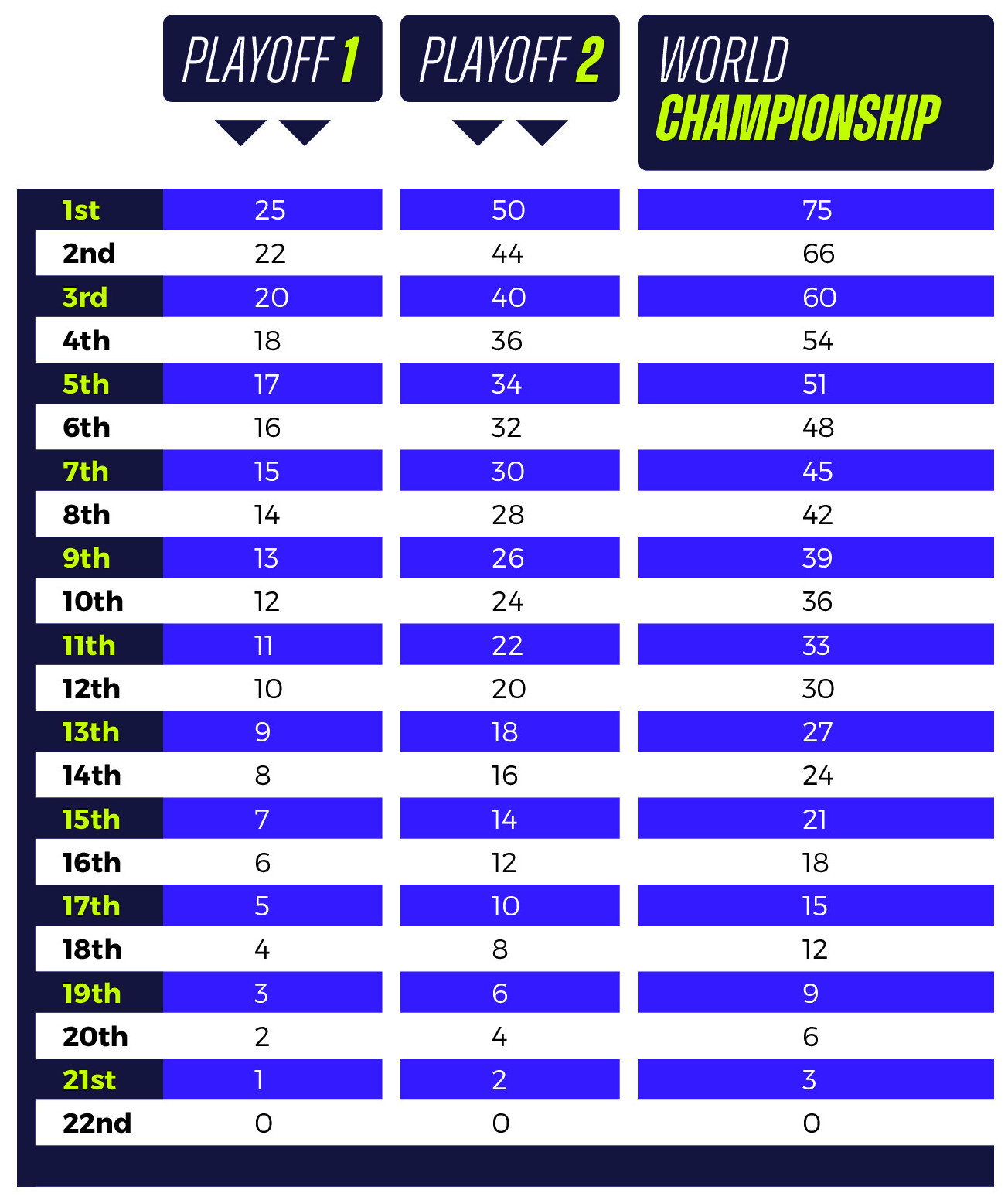
Moto Format
The SMX World Championship will operate under a two-moto format for both the 450 and 250 divisions. Each moto will be 20
minutes plus one lap, in which Olympic scoring will determine an overall finishing position for each round. Championship points will be awarded in accordance with each finishing order.
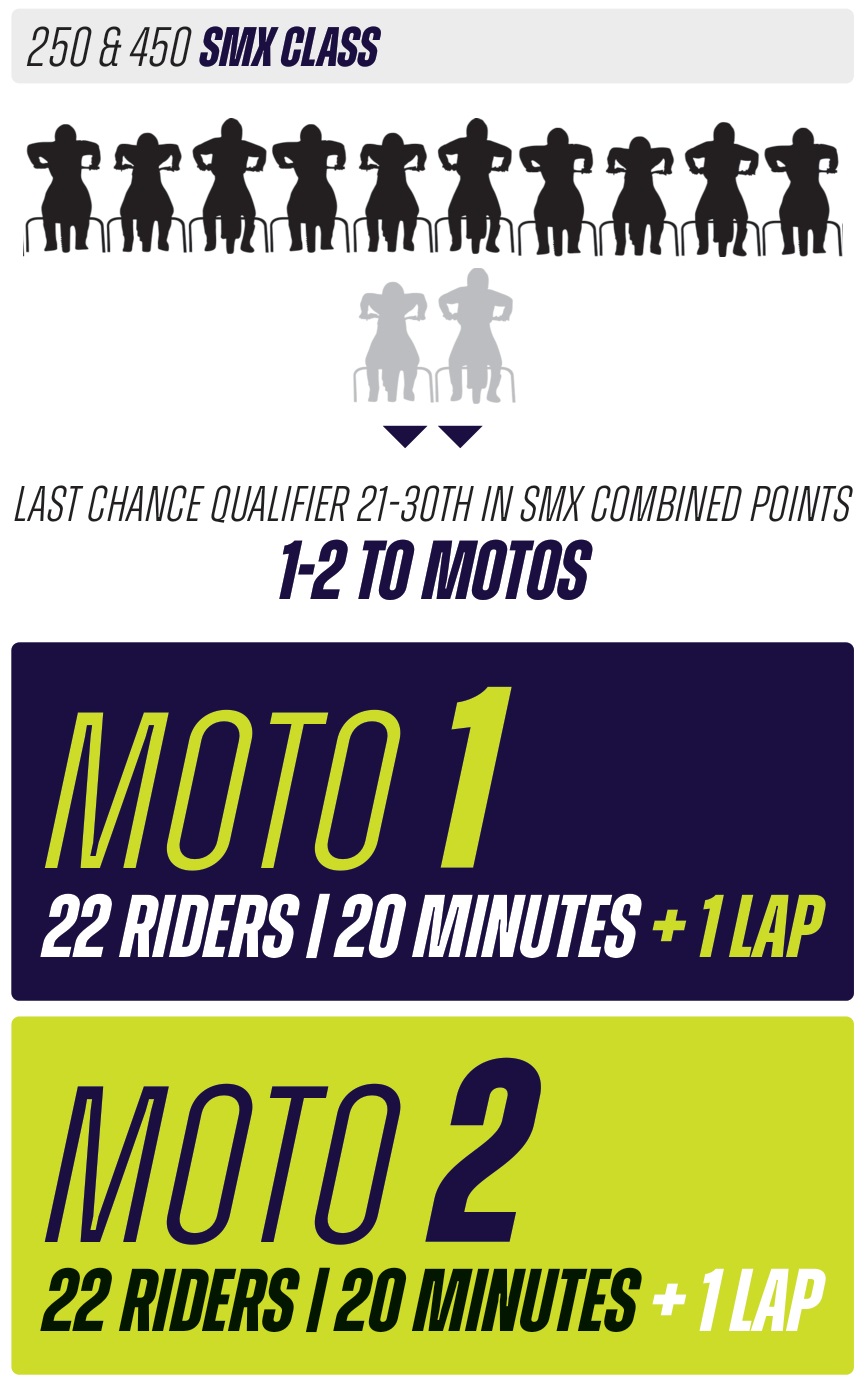
The Bikes
Nine different manufacturers currently create 250cc and/or 450cc bikes in SuperMotocross:
- Beta
- GasGas
- Honda
- Husqvarna
- Kawasaki
- KTM
- Suzuki
- Triumph
- Yamaha
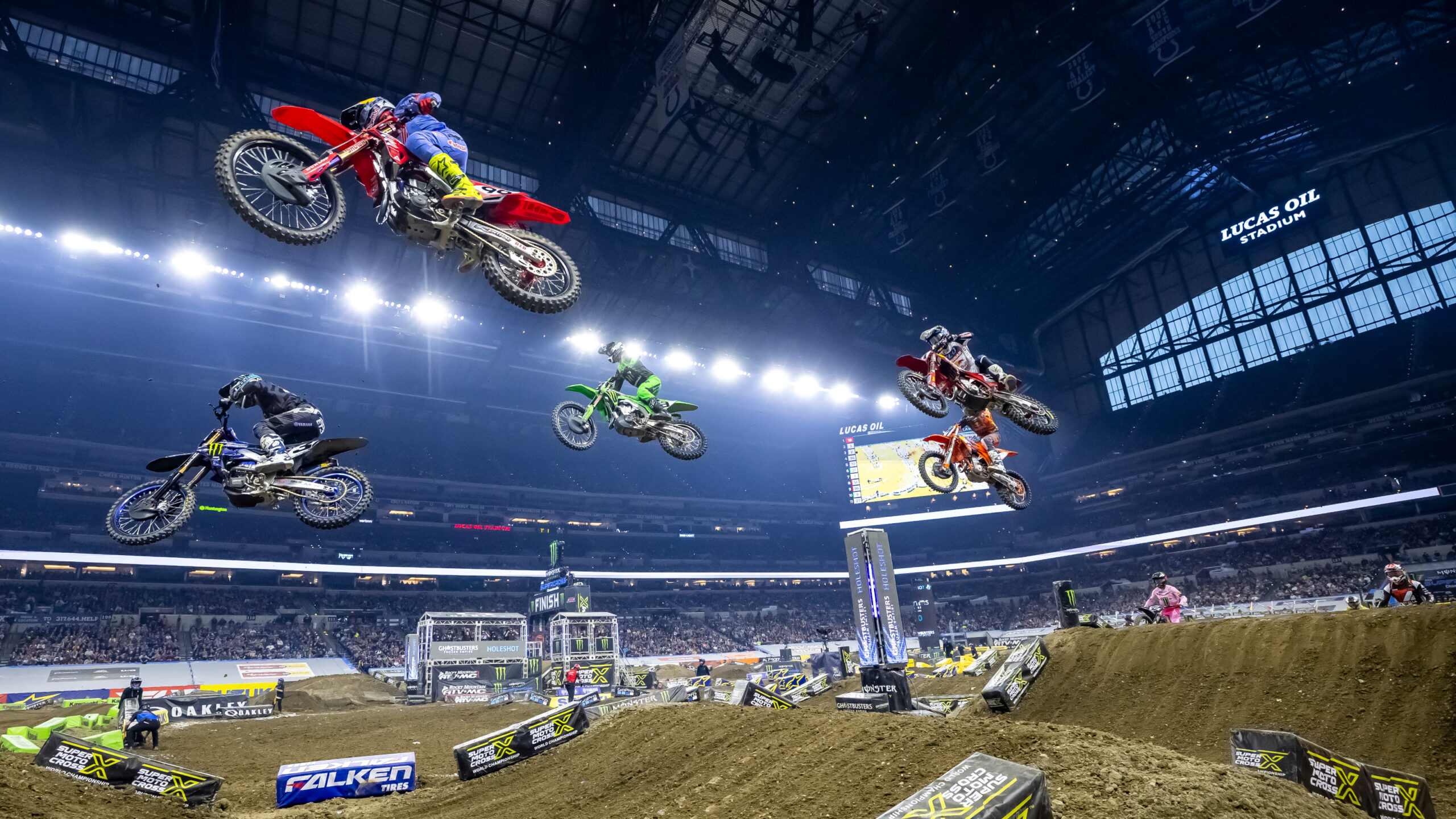
Championship Payout
A season-long, history-making purse of $10 million will encompass the entire 31-race SuperMotocross season, where $5.5 million will be on the line for the Playoff rounds of the SMX World Championship. A record $1 million will be awarded to the 450cc division champion, and $500,000 for the 250cc division champion. It’s the most prize money in the history of off-road motorcycle racing.
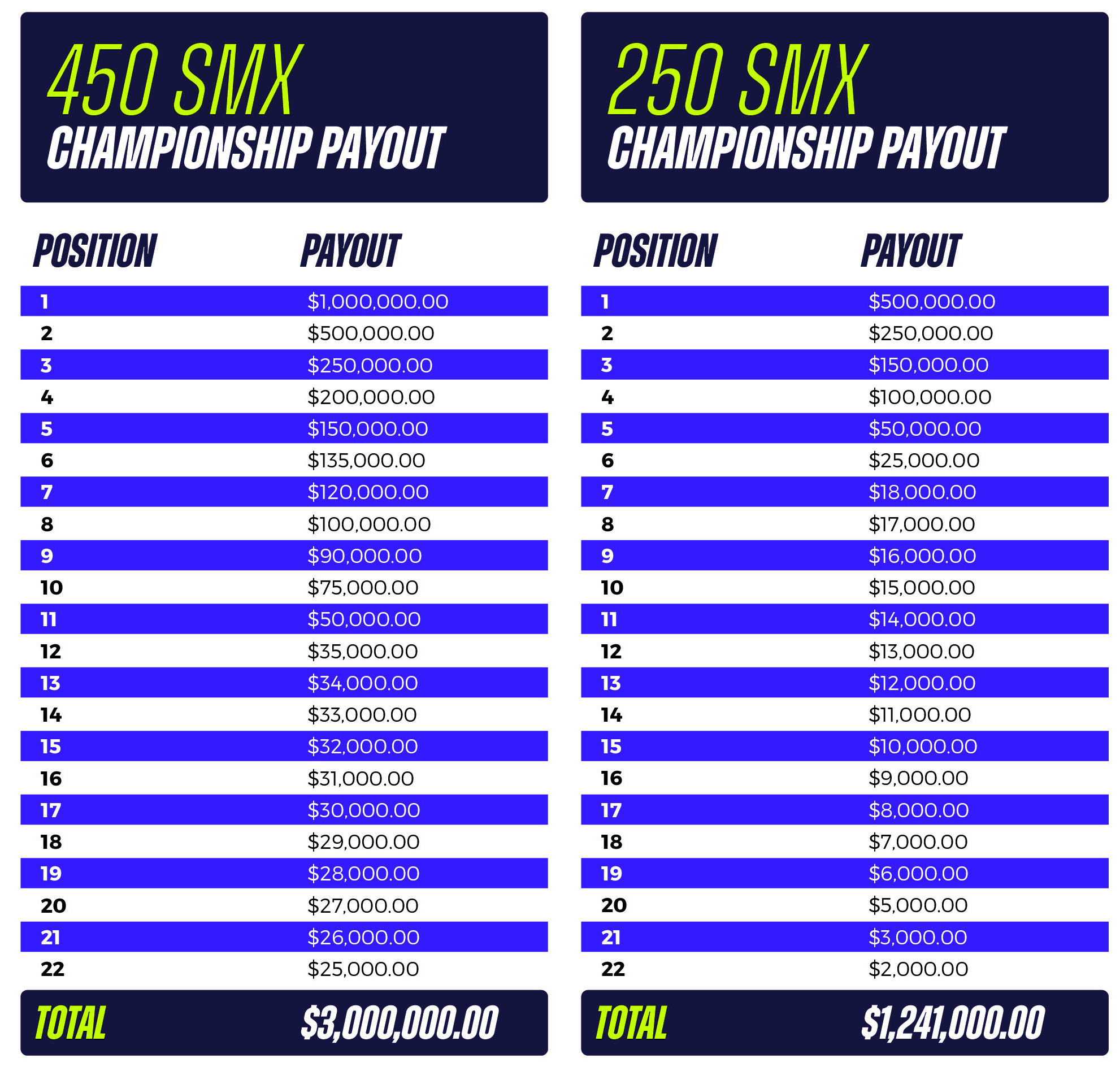
Terminology
- AMA American Motorcyclist Association
- CC Cubic centimeters (in reference to engine displacement)
- DISPLACEMENT The space covered or volume swept out by the engine piston at each stroke
- DISQUALIFICATION Unless otherwise specified, the forfeiture of all points, awards, and prizes earned during a particular race
- FLAGGERS Workers stationed at various points around the track to advise riders of track conditions via color-coded flags
- GET-OFF A crash
- HIGH-SIDE A crash where the rider goes over the top of the bike, as opposed to laying it down (or a “low-side”)
- HOLESHOT Taking the lead into the first turn of a race
- HOMOLOGATION The process of acquiring eligibility for a motorcycle to be entered in competition, with rules formulated to create parity among race bikes and maintain a level playing field for competitors
- LINE A specific way around the track or through a particular part of the track; can vary with changing course conditions
- OEM Short for original equipment manufacturer
- OVERALL The final ranking of the two moto format
- PIT/PADDOCK Area primarily designated for the preparation and maintenance of race equipment, it may also include parking for transporters and other support vehicles
- PIT CREW Mechanics and/or team assistants
- PRIVATEER A racer competing without the benefit of a factory contract or major sponsor support
- PROGRAM The predetermined outline of events that make up a race day
- SEIZE Engine failure due to excessive heat buildup
- STOPPIE Riding on the front wheel only, usually under hard braking
- WHEELIE Riding on the rear wheel only, usually under hard acceleration
- WRENCH Slang for mechanic
